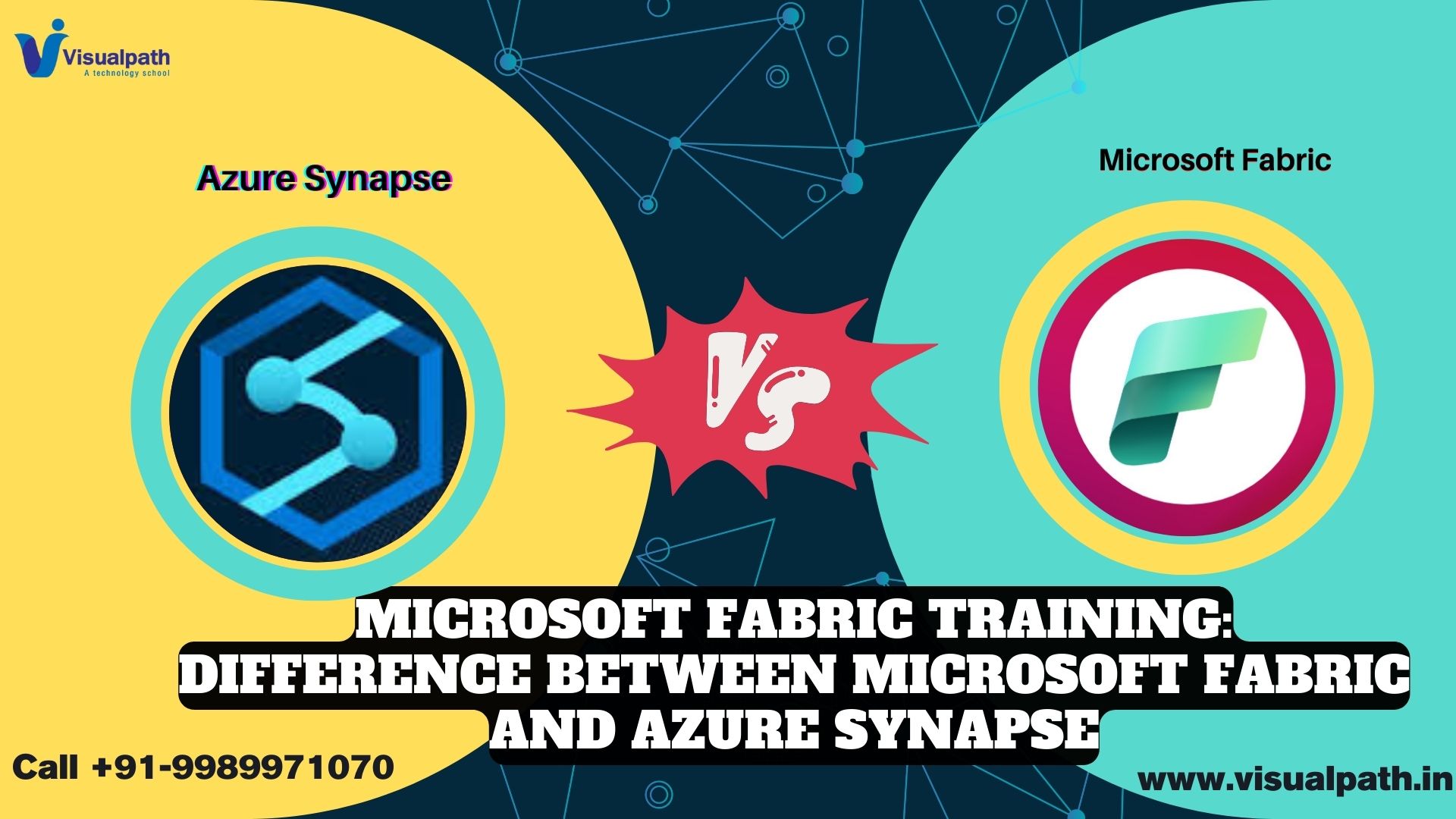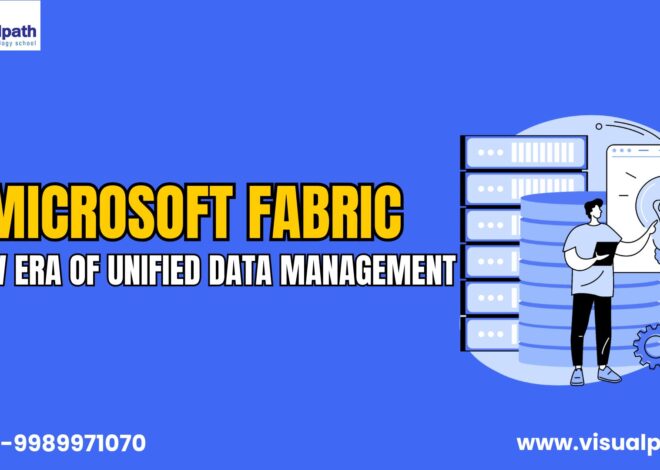
Microsoft Fabric Training: Understanding the Difference between Microsoft Fabric and Azure Synapse
Microsoft Fabric Training: Understanding the Difference between Microsoft Fabric and Azure Synapse
In the rapidly evolving landscape of data platforms, Microsoft has consistently led the way with innovative solutions tailored to modern business needs. Two of its most prominent offerings—Microsoft Fabric and Azure Synapse Analytics—are pivotal tools for managing, integrating, and analyzing data. Both platforms provide robust capabilities, yet they cater to distinct requirements and use cases. If you’re looking to harness their potential effectively, enrolling in a Microsoft Fabric Course or specialized Microsoft Fabric Training can equip you with the necessary skills to stay ahead.
Overview of Microsoft Fabric
Microsoft Fabric is an all-encompassing data platform designed to unify and simplify data workflows. Built to streamline data engineering, integration, and analytics, Microsoft Fabric serves as a one-stop solution for managing end-to-end data pipelines. It integrates seamlessly with tools like Power BI, Synapse Data Engineering, and Azure Data Factory, enabling businesses to work with a single, unified interface for their data needs.
One of the standout features of Microsoft Fabric is its emphasis on collaboration. By providing a shared workspace, teams can work together on data preparation, analysis, and visualization. Microsoft Fabric is well-suited for organizations seeking to eliminate silos and establish a unified data strategy. For professionals in Hyderabad, Microsoft Fabric Training In Hyderabad offers hands-on guidance in mastering these tools, making them industry-ready in this evolving domain.
Overview of Azure Synapse Analytics
Azure Synapse Analytics, on the other hand, is a data integration and analytics platform that focuses on big data and data warehousing. It enables businesses to analyze vast amounts of structured and unstructured data, integrating seamlessly with Azure services and third-party tools. With its robust querying capabilities, Synapse is particularly suitable for enterprises that require high-performance analytics over massive datasets.
Azure Synapse excels in managing complex queries and supporting real-time data processing. It is best suited for businesses that rely on deep analytical workloads and need to derive insights from data warehouses and data lakes. Unlike Microsoft Fabric, which is more collaborative and user-friendly, Synapse offers advanced capabilities for data scientists and engineers who require precise control over their analytics pipelines.
Key Differences Between Microsoft Fabric and Azure Synapse
- Scope and Usability
Microsoft Fabric is designed to be an all-in-one solution, covering data integration, transformation, and visualization. Its user-friendly interface and collaborative features make it accessible to a broader audience, including business analysts and non-technical users.
Azure Synapse, however, is more specialized, focusing on data warehousing and big data analytics. It is better suited for technical users who need advanced querying and processing capabilities.
- Collaboration and Accessibility
Microsoft Fabric’s collaborative environment stands out, allowing multiple users to work together seamlessly on the same datasets. Azure Synapse, while powerful, lacks the same level of collaboration tools, making it more suitable for individual or technical teams working on isolated data projects. - Integration Capabilities
Both platforms offer excellent integration with Azure services. However, Microsoft Fabric provides a unified experience, integrating tools like Power BI and Azure Data Factory into a single platform. Azure Synapse focuses more on connecting with external data sources and managing complex analytical workloads. - Target Audience
Microsoft Fabric is geared towards organizations looking for simplicity and collaboration in their data processes. Azure Synapse, in contrast, is tailored for enterprises requiring high-performance analytics and in-depth data processing.
Why Microsoft Fabric Training Matters
Understanding these differences is crucial for professionals aiming to advance their careers in data management. Enrolling in a Microsoft Fabric Training program can help you master the platform’s unique features, such as its unified data environment and collaboration tools. For those in Hyderabad, Microsoft Fabric Training In Hyderabad offers an added advantage, combining industry expertise with practical, hands-on experience tailored to the local tech ecosystem.
Conclusion
Both Microsoft Fabric and Azure Synapse are exceptional platforms, each with its strengths and ideal use cases. While Microsoft Fabric excels in unifying workflows and fostering collaboration, Azure Synapse shines in handling large-scale analytics and complex data queries. Choosing between the two depends on your organization’s specific needs, technical expertise, and data strategy.
To maximize the benefits of these platforms, professionals should consider formal learning options like a Microsoft Fabric Course. Comprehensive training ensures you’re equipped to leverage Microsoft’s cutting-edge tools, whether for collaborative data workflows with Microsoft Fabric or deep analytical insights with Azure Synapse. As businesses continue to prioritize data-driven decision-making, mastering these platforms will keep you ahead in the competitive landscape.
Visualpath is the Leading and Best Software Online Training Institute in Hyderabad. Avail complete Microsoft Fabric Training Worldwide. You will get the best course at an affordable cost.
Attend Free Demo
Call on – +91-9989971070.
Visit: https://visualpathblogs.com/
WhatsApp: https://www.whatsapp.com/catalog/919989971070
Visit https://www.visualpath.in/online-microsoft-fabric-training.html



